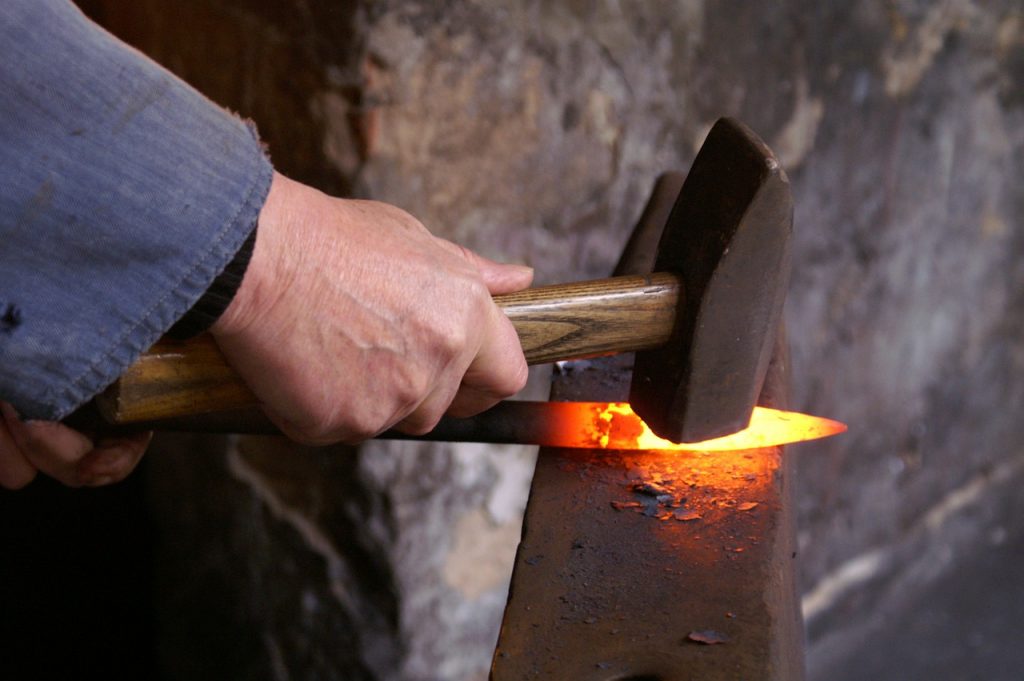
HARDNESS OF STEEL ACCORDING TO THE ROCKWELL SCALE (HRC) Part 1
When it comes to Japanese knives, be it a Gyuto, a Santoku, or a Deba knife, steel hardness and blade quality are two important factors that help users determine which knife model is worth the pay. Selecting a Japanese knife may look like a challenge; however, if you go through important points a Japanese knife should have, it will no longer be a difficult decision-making process.
When choosing the type of steel to use, blacksmiths will consider various properties such as the duration of sharpness, ease of maintenance and sharpening, price, and availability of the steel. Together, these properties are inextricably linked to the hardness of steel.
By definition, hardness is the resistance of material to embossing or located plastic (permanent) deformation. In simpler terms, it means how resistant the material is to wear and tear. The hardness of steel depends on its chemical composition and thermo-mechanical treatment There are various chemical elements that impact the hardness of steel, with carbon having the greatest impact. Along with carbon, other elements such as manganese, chromium, vanadium, and molybdenum also form new, extremely hard compounds known as carbides.
In the example below, the connection between hardness and carbon content is clearly visible and obvious. The higher the carbon content, the higher level of hardness of various types of white steel.
- White Steel 1 / 63 HRC / C = 1.25-1.35 %
- White Steel 2 / 61-62 HRC / C = 1.05-1.15 %
- White Steel 3 / 60 HRC / C = 0.80-0.90 %
Measuring Hardness
There are several different methods for measuring hardness, each using their own hardness scales. According to these scales, relative hardness of steel is determined by measuring the depth of penetration of an indenter. Conical diamonds are most commonly used and impressed on material, then the penetration depth at standard force is measured. Different measuring methods will employ their own combination of test forces and test indentations which will depend on the material that is being tested. For cutlery, the most commonly used scale is the Rockwell scale (HRC).
- For solid kitchen knives, hardness starts at 56 HRC, but these blades don’t hold edges very well and are hard to sharpen. The benefits are that they’re tougher and more ductile.
- Most Japanese knives feature a hardness rating between 60 and 62 HRC. These knives can keep their edge for a long time and are easy to sharpen due to the steel structure. The downsides to these knives are that they’re prone to breakage and are delicate. If used incorrectly, they can be easily damaged.
- Modern steels formed from a process known as powder metallurgy rank highest on the Rockwell scale and feature hardness ratings from 64 to 68 HRC. These steels are rarer, thus more expensive, and harder to process. When used correctly, these blades feature incredible and long-lasting sharpness, however they do require more work when re-sharpening.
How hard is ZDP-189 steel?
ZDP-189 / 66-67 HRC / C= 3 %
ZDP-189, known as ‘super steel’, is a type of steel developed using the powder metallurgy process. This steel offers extreme hardness and excellent edge retention. It’s composed of as much as 3% carbon and 20% chromium along with various other alloy elements. This is an extremely high carbon content and is unusual for tool steels. The steel is powdered and can reach as high as 70 HRC if the heat treating is done correctly. For comparison sake, 66 to 67 HRC is usually as high as kitchen knives are rated for
Due to its high chromium content, ZDP-189 steel must contain a high percentage of carbon so the elements can transform into carbides, which are key to the hardness and duration of sharpness of the steel. The main advantage of ZDP-189 steel is that it retains its sharp edge for extremely long periods of time, reducing the need to re-sharpen after every use. Because of the hardness of the steel, it loses a bit of toughness making it more prone to breakage. Therefore, it requires gentle handling and users must be mindful of the cutting surface it is used on.
As there is a lot more to discuss regarding Rockwell scale ratings, we’ll continue in Part 2 of HARDNESS OF STEEL ACCORDING TO THE ROCKWELL SCALE (HRC).
